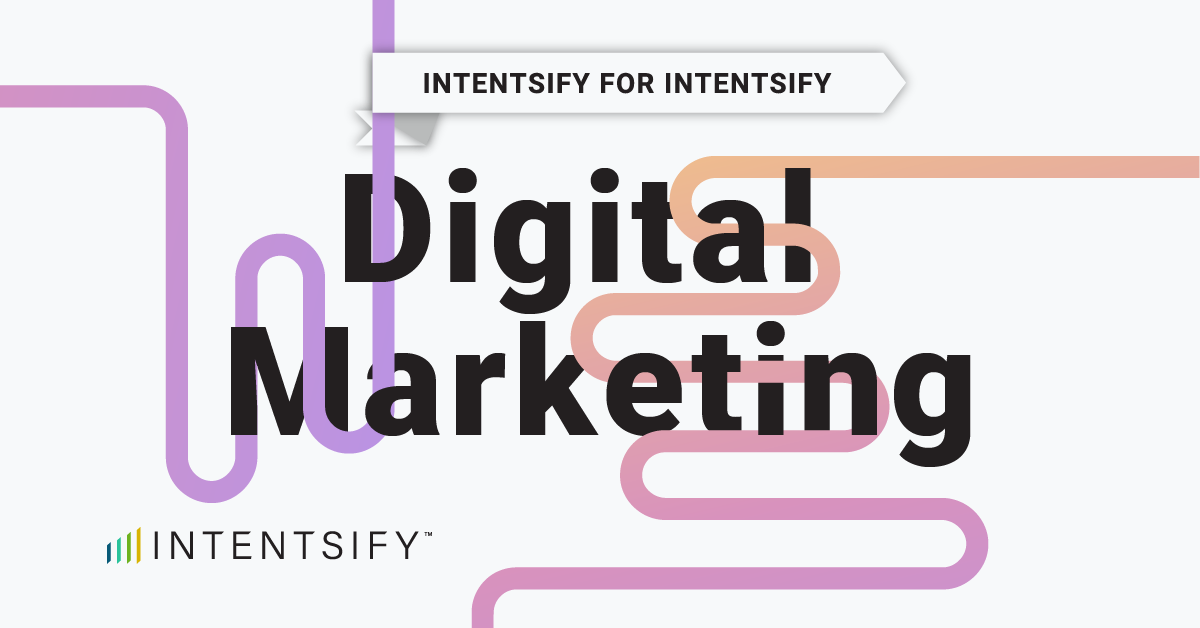Content marketing can be complex. It involves many moving parts, distinct processes and participation across numerous teams. Through all of this, marketers often waste efforts creating irrelevant content for accounts that shouldn’t be prioritized and teams that likely won’t use it anyway.
Intent data, when used correctly, can be highly beneficial for content marketing teams, informing content development and distribution efforts at every stage of the buyer’s journey. Here I outline the most common and effective ways to leverage intent signals throughout the various buying stages.
The 4 Buyer Journey Stages
Let’s start by saying there’s no hard-set rule for a four-stage buyer’s journey. Every organization is different. The stages outlined below are simply based on my own experiences.
A couple of these stages are often broken down into more granular phases (especially Stage 3). Your unique business model, specific products and services, amount of content, technology stack, team resources, and more should inform the sophistication of your buyer journey stages.
Moreover, though stages imply a linear progression of prospect research, this is rarely the case. Prospects will typically jump between stages based on numerous additional factors. The reason why we organize the journey in this way is simply to help ensure consistent, helpful messaging developed according to logical problem-solving processes.
Stage 1: Recognizing the Need
Otherwise known as the awareness stage, this is where prospective buyers typically conduct research to identify the underlying causes of their business challenges. At this point, prospects have little insight into available solutions—they just want to better understand the problem so they can effectively identify a solution.
Content for this stage should be high-level and educational. This isn’t the stage for product-related content or even solution-focused content (though weaving in suggested guidance is appropriate and helpful).
The main objectives for content in this stage is two-fold:
-
Frame the problem for prospects in a way that aligns with your product value props and general messaging.
-
Build your brand’s credibility and share-of-voice within an industry.
Using Intent Data for Stage 1
Developing content specific to prospects’ challenges requires you to know a few things about the accounts you’re targeting. That’s where intent data can be so valuable, helping to:
-
Identify prospective buyer concerns. Most B2B products solve for a range of challenges, or at least an array of pain points stemming from one challenge. If a large percentage of your target accounts are actively researching topics focused on a specific pain point your product solves for, you can then prioritize your messages accordingly.
-
Select the right content (or identify gaps in your content library). Once you understand your prospects’ most pressing concerns, you can select the content that speaks best to those challenges, providing insight about what’s causing their pain points and the initial steps they can take to improve their situation. Of course, you may find that you don’t have the content you need. Identifying such content gaps is just as important as identifying the concerns.
-
Discover where buyers are researching (and the types of content they’re consuming). Intent data solutions that provide transparency into the exact pieces of content being consumed allow you to improve both your persona profiles, content marketing tactics and even digital strategy. This data can be used to identify where you should focus byline article opportunities and buy digital ad placements. It can also tell you the format preferred by prospects (e.g., articles, infographics or videos).
Stage 2: Exploring Solutions
At this point, prospects should have a basic understanding of the challenges they need to address. Here, you want to drill down into the various solutions available to them (often via “how to” content), keeping a semblance of objectivity.
Like with Stage 1, your objectives here should be to:
-
Continue to develop brand credibility.
-
Describe the various solutions in a way that leads toward your businesses’ specific products/services.
Using Intent Data for Stage 2
All of the intent data uses outlined in Stage 1 still apply here. Additionally, you can use intent data to:
-
Identify which accounts are advancing through the buyer’s journey and how. By analyzing changes in research activity via third-party intent providers alongside your first-party intent data (i.e., website activity) you can further prioritize accounts and select messages/content specific to their content consumption.
-
Inform content-syndication strategies. Stage 2 content is typically best suited for content syndication campaigns. But instead of simply letting publishers generate any leads matching your ideal customer profile (ICP) and personas, you should let intent signals dictate which accounts publishers target and acquire lead data from.
-
Select the right email nurture path. By now you should be acquiring a fair amount of prospect contact data, whether through inbound form fills for ebooks and webinars or via content syndication campaigns. And while the content that directly resulted in leads is a good indication of which nurture path to select, it’s important to weigh that one piece of content against the account’s overall research activity.
Stage 3: Considering Specific Products
Stage 3 content should bridge the gap between marketing content and sales-enablement assets. In effect, it should help convert prospects to sales opportunities and customers.
Objectives of Stage 3 content should be to:
-
Link your product/service value propositions to the solutions and challenges discussed in the content consumed by prospects so far.
-
Highlight how your solutions work and the benefits customers can expect.
-
Substantiate your claims through the words and results of current customers.
Using Intent Data for Stage 3
Here monitoring the right topics and/or keywords is critical. (I recommend monitoring both topics and keywords since they have complementary benefits. Topics consider the context of the content consumed, using natural language processing (NLP), which is important. On the other hand, keywords can be customized to your specific needs, which provides helpful insights, especially for niche solutions.)
Rather than monitoring problem- and solution-focused topics/keywords, you want to track those relating to specific product categories, products names and even competitor brand names. You can then use the resulting intent insights to:
-
Personalize landing pages to specific segments (or even accounts). Knowing what product categories specific accounts are researching can tell you how to tailor landing pages for them.
-
Arm BDRs and sales reps with competitive intel and assets. If you know a certain prioritized account has been researching a competitor’s offering, you can then provide your BDRs with the right content needed to persuade prospects that your solution is the better option. This may come in the form of tailored talk tracks, battle cards, sales decks and case studies.
Stage 4: Deciding on Renewal or Churn
Content in this stage should help customers get more value from their current investment and realize how additional investments would result in an even greater return—all while conveying how valued they are.
The specific objectives include:
-
Strengthening customer relationships.
-
Helping customers leverage your solutions more effectively.
-
Creating customer advocates and evangelists.
-
Ensuring subscription renewals.
-
Affecting interest in additional or upgraded solutions.
Using Intent Data for Stage 4
As in Stage 3, by tracking customer research on competitors and competitive products, you can more effectively:
-
Identify which customers are most likely to churn. Churn often results from customers lacking education on how to use your solutions. Seeing early signs of dissatisfaction allows marketers to arm customer success teams with appropriate content—such as talk tracks, user guides and even direct mail—to address customer issues before it’s too late.
-
Locate accounts ripe for cross-sell or upsell. Competitive research isn’t always indicative of churn. If the intent data shows certain customers researching solution categories you offer (but they haven’t yet bought), you can then focus on getting the right Stage 1–3 content in front of them to expand the account’s investment.
There are undoubtedly more ways to use intent data to guide your content marketing efforts. Those outlined above, however, provide great benefits for B2B marketing teams, including increased brand awareness and demand among target accounts, better conversion rates, reduced sales cycles and far greater efficiency.







